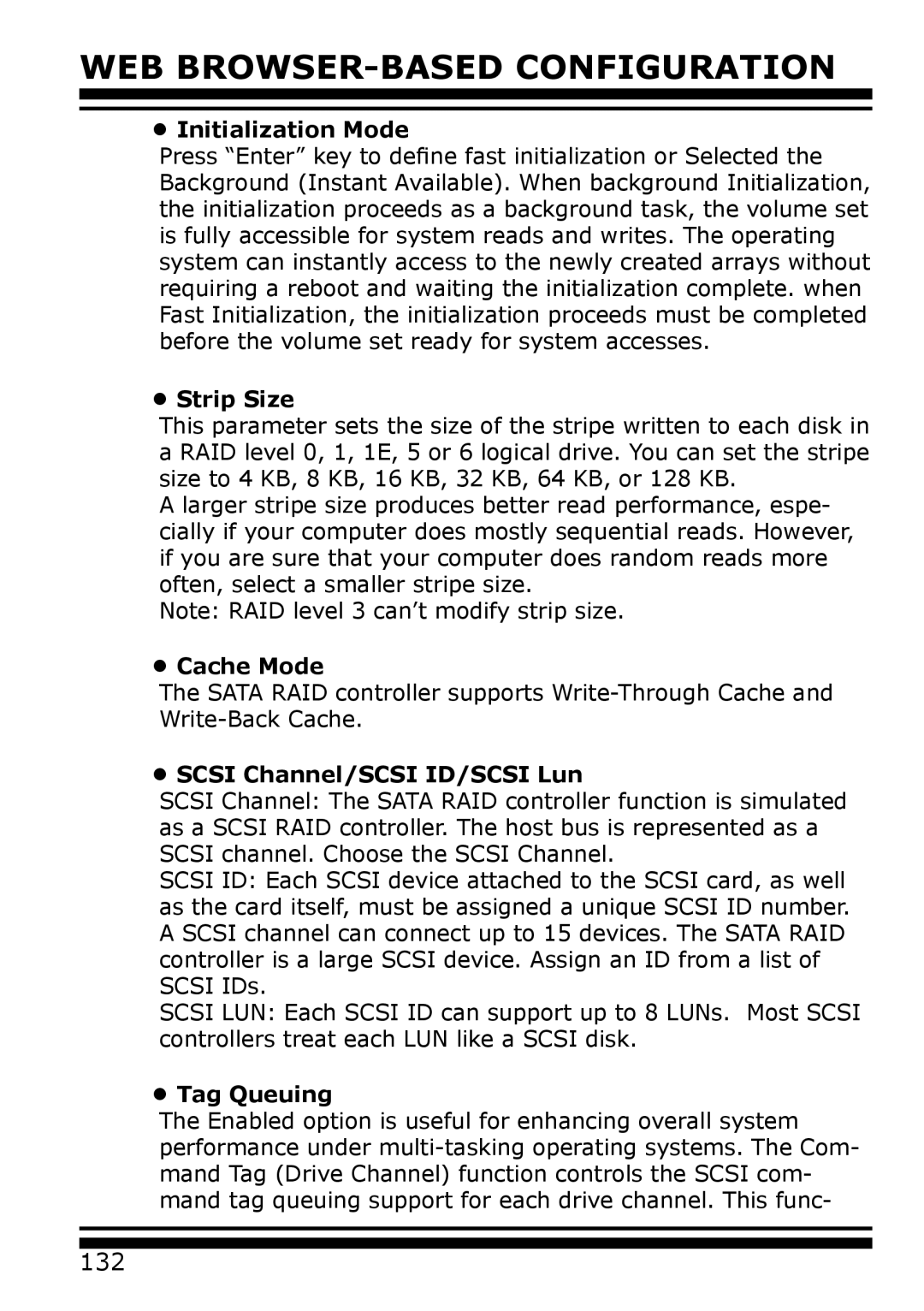
WEB
•Initialization Mode
Press “Enter” key to define fast initialization or Selected the Background (Instant Available). When background Initialization, the initialization proceeds as a background task, the volume set is fully accessible for system reads and writes. The operating system can instantly access to the newly created arrays without requiring a reboot and waiting the initialization complete. when Fast Initialization, the initialization proceeds must be completed before the volume set ready for system accesses.
•Strip Size
This parameter sets the size of the stripe written to each disk in a RAID level 0, 1, 1E, 5 or 6 logical drive. You can set the stripe size to 4 KB, 8 KB, 16 KB, 32 KB, 64 KB, or 128 KB.
A larger stripe size produces better read performance, espe- cially if your computer does mostly sequential reads. However, if you are sure that your computer does random reads more often, select a smaller stripe size.
Note: RAID level 3 can’t modify strip size.
•Cache Mode
The SATA RAID controller supports
•SCSI Channel/SCSI ID/SCSI Lun
SCSI Channel: The SATA RAID controller function is simulated as a SCSI RAID controller. The host bus is represented as a SCSI channel. Choose the SCSI Channel.
SCSI ID: Each SCSI device attached to the SCSI card, as well as the card itself, must be assigned a unique SCSI ID number. A SCSI channel can connect up to 15 devices. The SATA RAID controller is a large SCSI device. Assign an ID from a list of SCSI IDs.
SCSI LUN: Each SCSI ID can support up to 8 LUNs. Most SCSI controllers treat each LUN like a SCSI disk.
•Tag Queuing
The Enabled option is useful for enhancing overall system performance under
132
